November was Shorts Month! All shorts were watched at home on video, except for an outing to the November edition of Bizarro Saturday Morning, at which I fell asleep during the only theatrical short, tired out by episodes of Casper, Ultraman and Rocket Robin Hood, so it’s sadly not represented here.
The Policemen’s Little Run (1907, Ferdinand Zecca)
Tedious, undistinguished little romp, wherein cops chase a dog for stealing food, then the dog chases the cops. Fakey backgrounds ensue. Ferdinand Zecca, director of Kissing in a Tunnel (not the 1899 original or the 1899 remake, but the 1901 remake), later co-directed one of the first feature-length (well, 45 minutes) films.
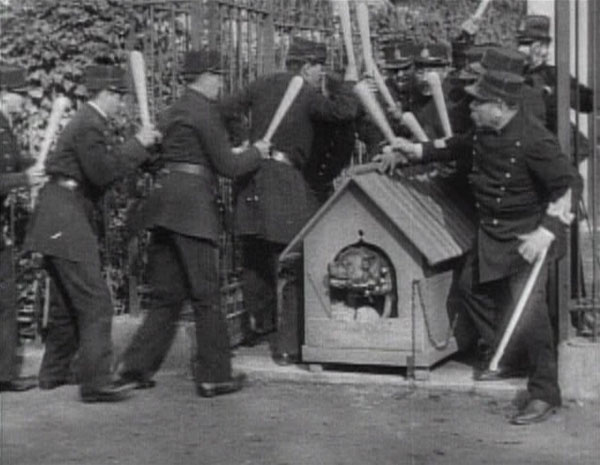
Troubles of a Grasswidower (1908, Max Linder)
The Mr. Mom of its time. Dude is an asshole so his wife leaves him, goes home to mother. Dude then fails to do the simplest household tasks until everything is in ruins and his wife returns to shame him. Terrible! Well, it’s slightly more bearable than the cops chasing the dog. Linder must’ve played the widower; he wrote and starred in plenty more shorts, such as Max’s Hat, Max Takes Tonics and Max and Dog Dick (?!)

Winsor McCay, the Famous Cartoonist of the N.Y. Herald and His Moving Comics (1911)
Now that’s more like it. Winsor announces he’s going to make an animated moving picture, some blowhard dudes laugh at him, then he damn does it and it’s brilliant. One should never doubt the author of Dreams of a Rarebit Fiend.
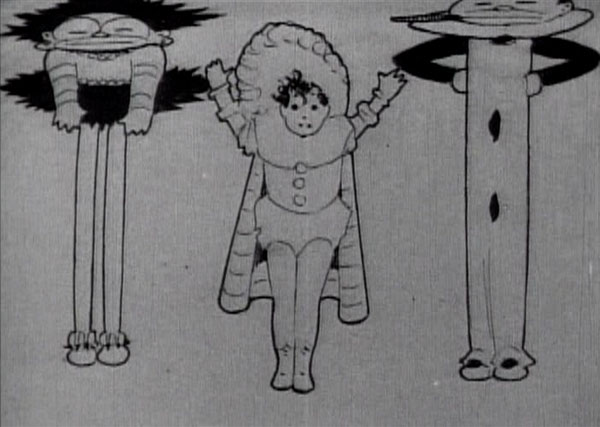
Winsor at work:
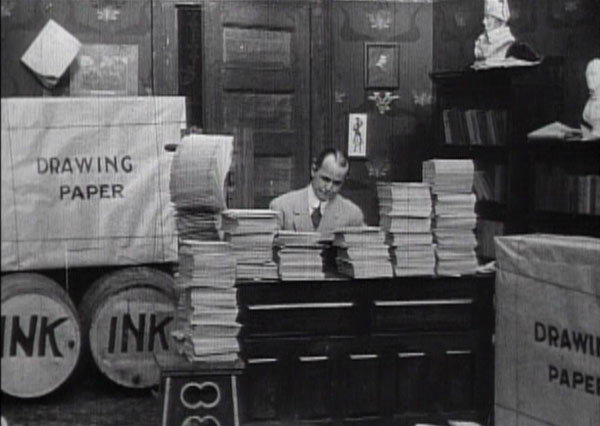
Dream of a Rarebit Fiend (1906, Edwin S. Porter)
Most of the movie is the guy drinking, eating and going home, with finally some actually dreaming there at the end. His shoes fly off on strings, some stop motion, some Exorcist bed-bucking and Little Nemo bed-flying. The best part, with little devils beating him from above, looks like a Melies-lite advertisement for headache powder. One assumes he’s speaking the punchline at the end, but there’s no intertitle. Comic strip was better!
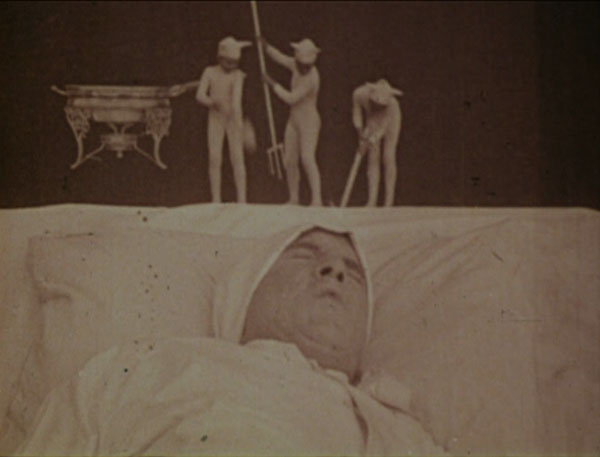
Winsor would later create his own animated Rarebit films, and Melies would make the probably unrelated Dream of an Opium Fiend in 1908.
The Telltale Heart (1928, Charles Klein)
I love total Caligari-ripoff expressionism in cinema, and there isn’t enough of it so I was happy to find this. Completely excellent, probably my favorite Telltale Heart yet. I don’t mean to disparage the recently-watched Ted Parmelee animated version and I do miss the rich voice of James Mason, but everything works here – the Caligari sets and fonts, the acting of the lead fellow, his crazy-POV version of the inspectors and the montage and effects (overlays and mirrors).
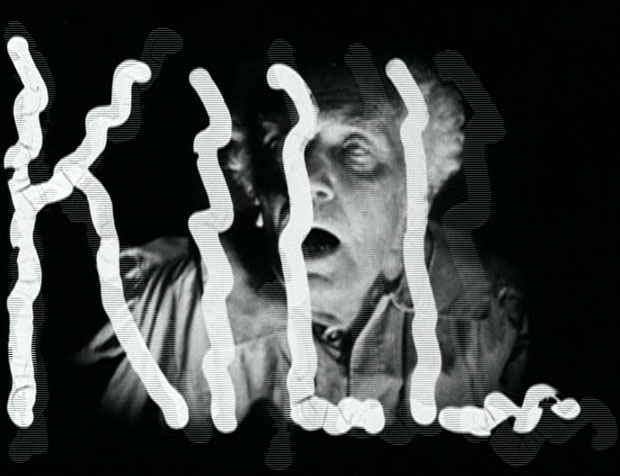
Depending who you believe, this was either directed by Klein (a writer/director up to the 40’s) or Leon Shamroy (cinematographer through the 70’s who worked with Fritz Lang, also shot The Robe, Caprice and Planet of the Apes).
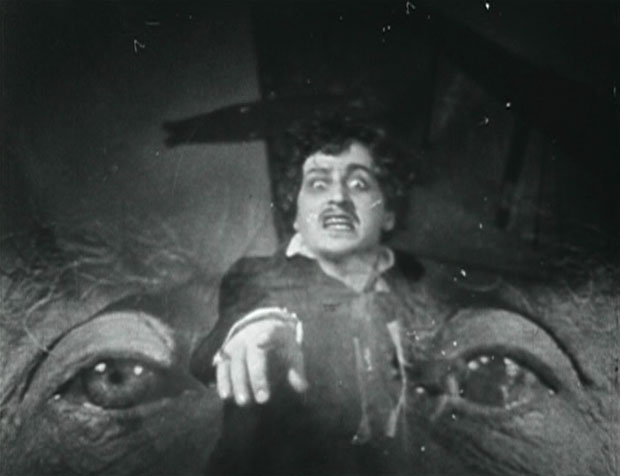
Fall of the House of Usher (1928, James Watson & Melville Webber)
Every version of Telltale Heart re-tells the story with narration or titles, but this film tells the Usher story through mystifying visuals… and since I’m not familiar with the story I still don’t know exactly what happened, but boy was it awesome.

What if cinema had ended up looking more like this? What if poets were directors? The mind boggles. I’ll bet Cocteau loved this (or despised it since he didn’t think of it first).

dream sequence from When The Clouds Roll By (1919, Victor Fleming)
A semi-remake of Rarebit Fiend! Douglas Fairbanks eats some Welsh rarebit (melted cheese on toast) along with mince pie, lobster and an onion. Not a drunken fool like the original rarebit fiends, DF is conned into eating the nightmarish midnight snack by a mad doctor. He then runs around doing stunts on horses, trampolines and camera-trick houses, pursued by ghosts, a party of society women and giant costume versions of the foods he ate. I am definitely dressing up as rarebit next halloween.

Oramunde (1933, Emlen Etting)
Woman in a too-long white dress dances on the rocks to express her sadness. Made me sad so I guess it’s pretty good.
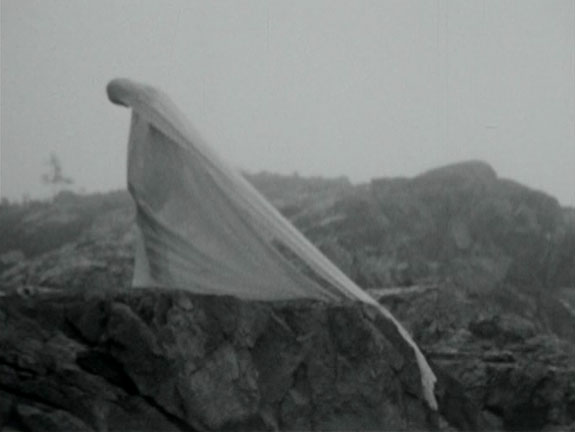
Hands (1934, Ralph Steiner & Willard Van Dyke)
Hands, falling, against black, doing stuff. Montage of hands doing stuff on location. Hands getting money for doing stuff. Hands buying stuff, taking vacation, getting married to other hands. Counts as propaganda somehow.





































